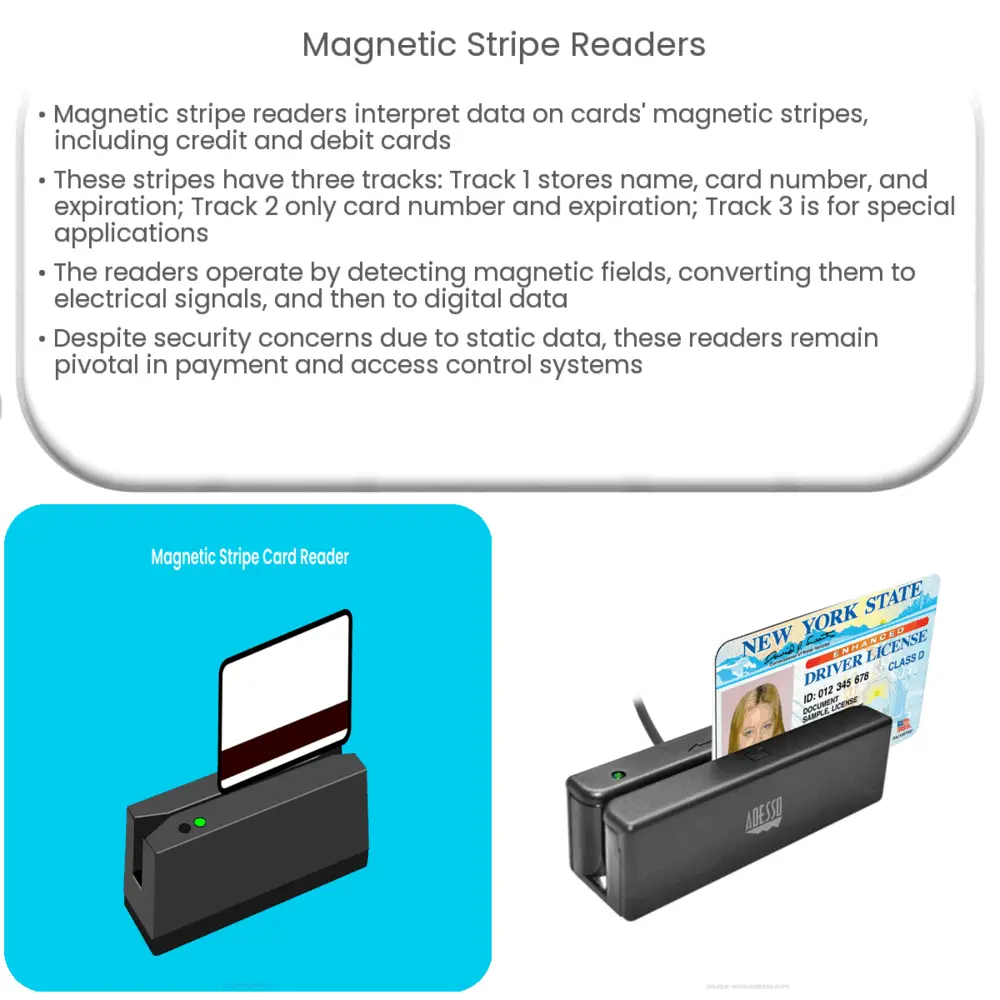Explore the workings of magnetic stripe readers, their diverse applications, security concerns, and the technology’s future outlook.

Magnetic Stripe Readers: An In-depth Look
Magnetic stripe readers, often known as card readers, are devices that interpret the information encoded on the magnetic stripe of a card. These cards include credit cards, debit cards, and access cards among others. In the following sections, we will dive deeper into the fundamentals, operation, and applications of these remarkable devices.
Understanding the Fundamentals
At the heart of the magnetic stripe reader’s functionality is the magnetic stripe, a band of magnetic material on the card’s surface. This stripe is divided into three tracks, each capable of storing data. The data on these tracks is encoded in a format that is universally recognized by magnetic stripe readers.
- Track 1: Stores the cardholder’s name along with the card number and expiration date.
- Track 2: Contains the card number and expiration date but without the cardholder’s name.
- Track 3: Seldom used and often reserved for flexible applications such as storing proprietary data.
The Operation of Magnetic Stripe Readers
Magnetic stripe readers operate by running a read head over the card’s magnetic stripe. This read head detects the magnetic fields from the stripe and converts them into electrical signals. These electrical signals are then processed into a readable format.
- The user swipes the card through the reader, moving it past the read head.
- The read head picks up the changes in the magnetic field caused by the magnetized particles in the stripe.
- The electrical signal generated by these changes is converted into digital data.
- The digital data is then processed and decoded to extract the stored information.
Applications of Magnetic Stripe Readers
Thanks to their reliability and ease of use, magnetic stripe readers have found widespread application in various industries. Let’s look at a few examples.
- Financial Transactions: In retail stores and supermarkets, magnetic stripe readers are used to process payments by reading the customer’s credit or debit card information.
- Access Control: Many companies use access cards with magnetic stripes to control entry to secured areas. The reader validates the card’s information and allows or denies access based on the stored data.
Additional Uses of Magnetic Stripe Readers
Aside from financial transactions and access control, magnetic stripe readers also serve various other purposes:
- Hotel Room Keys: Many hotels use cards with magnetic stripes as room keys. The card, when swiped through a reader installed on the door, verifies the guest’s access.
- Public Transportation: Cities often use cards with magnetic stripes for bus, tram, or metro tickets. The reader scans the card and deducts the appropriate fare.
- ID Verification: Government entities and organizations use magnetic stripe readers to verify identification cards and licenses.
Concerns and Future of Magnetic Stripe Readers
Despite the widespread use of magnetic stripe readers, certain security concerns persist. The data on a magnetic stripe is static, which means it can be easily copied or cloned. Additionally, readers can inadvertently read unwanted cards if they are in close proximity. This has led to an increasing shift towards chip cards and contactless payment methods such as NFC (Near Field Communication).
Nevertheless, the transition from magnetic stripes to more secure alternatives will take time. For the foreseeable future, magnetic stripe readers will remain an integral part of payment processing and access control systems.
Conclusion
Magnetic stripe readers, despite being a technology with several decades of history, continue to play a critical role in our daily lives. From making a simple purchase at the grocery store to entering a secure office building, we often interact with these devices without giving them a second thought. As we move towards a more digital future, their role may change, but their core functionality—providing a simple, efficient means of reading encoded information—will likely remain indispensable. However, as with any technology, continuous evolution is essential to address the ever-present security challenges and to ensure that this legacy technology can continue to serve in a world that is increasingly shifting towards advanced digital solutions.



